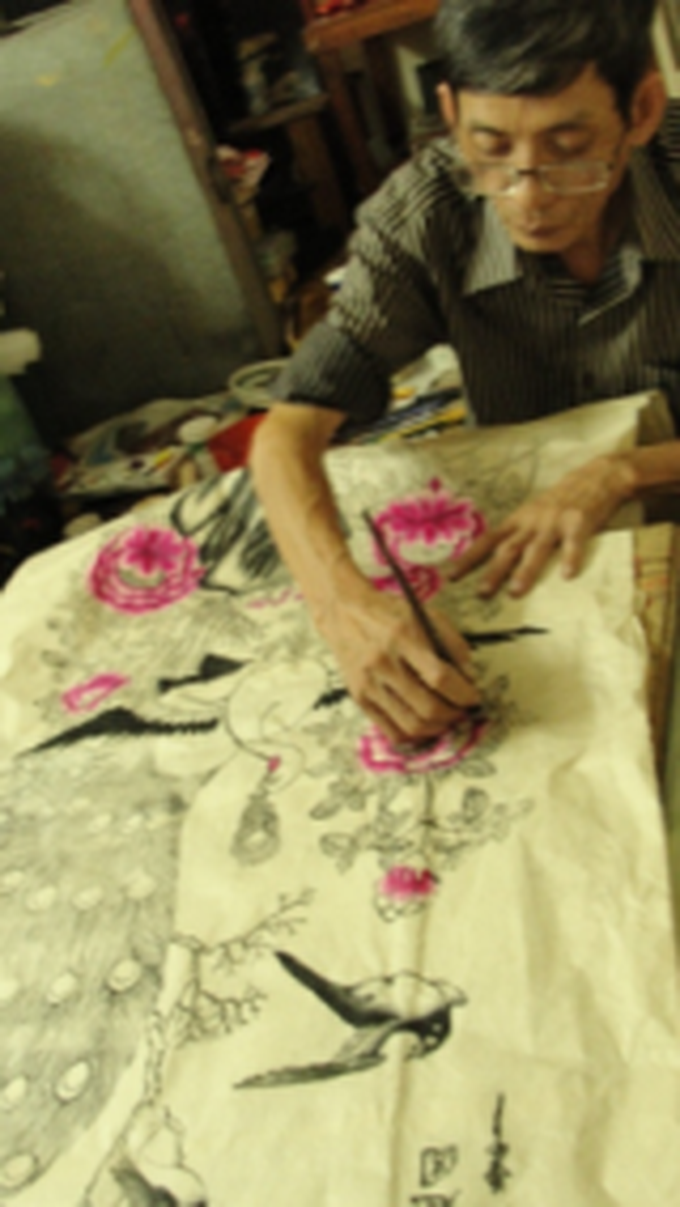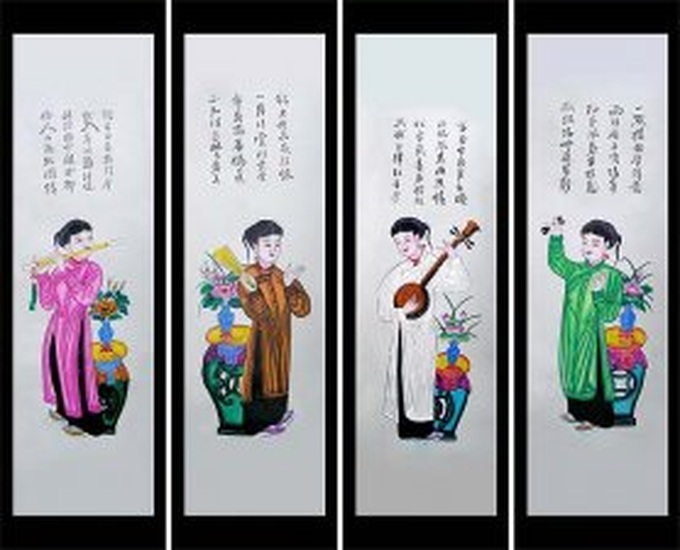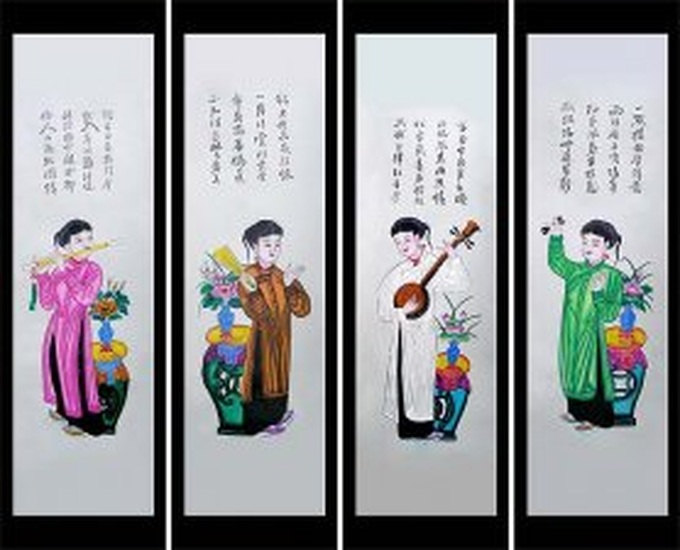A gem of the capital

Atist Le Dinh Nghien is colouring a painting for Tet holiday
Developed in Thang Long , the former name for the capital, now called Hanoi, in the 16thcentury, Hang Trong paintings were extremely popular between the 19th and the 20th centuries.
The name of the art came from the place where it was created. The paintings used to be made and sold by artists living on Hang Trong Street. At its pinnacle, Hang Trong paintings were to be seen in almost every house in Hanoi and neighboring provinces around Tet.
There are some common topics for Hang Trong paintings and they fall in two main categories: paintings for Tet holiday decorations and paintings for worship at temples, pagodas or locals’ altar.
These types of paintings fall into two categories. Tet paintings feature flowers, fruits, feminine figures or characters from famous works of Vietnamese literature. The paintings are colourfu, expressing wishes for peace, happiness and luck, or even to show embody a life philosophy.
The other type of paintings are meant for worship purposes. These are usually much bigger and include Buddha and other deities, such as ancestrial figures, the goddess of mercy, dragons, tigers or horses.
Some of the most famous of these works include Ngu Ho (five tigers), which depicts the strength of the Deity; To Nu (beautiful girls), Tu quy (four precious trees- fir, daisy, ivory bamboo, apricot which are considered the best representative of four seasons.
Art just for true artists



Paintings featuring beautiful girls
Like many other kinds of traditional arts, Hang Trong paintings have popularity amid the bustle of modern life. This began in the middle of the 20th century, when people turned to other colourful paintings with more modern content coming from China.
Because of the hard work and time involved in producing this Vietnamese art form, there are fewer young people who choose to learn.
“Our work requires the skills of a painter and a sculptor,” Nghien shared. “First, we must make patterns on a wooden piece to form a mould. Then we have to pour black ink into the mould and print it on paper. The final step, which is also the most difficult, is to add colour to the paintings. This step requires very special skills and a lot of time. Still they are difficult to sell.”
Only Le Dinh Nghien, the third generation of his family in the trade, has stuck with the art form.
Nghien has been invited to the Centre for restoring folk paintings in Vietnam Fine Arts Museum, in 1972, to help preserve and restore the old paintings. This work gave him the opportunity to continue with his passion for the art while earning enough money to support his family.
With more than 60 years devoted to the tradition, Le Dinh Nghien has shown not only his talent but also his special love and his sense of responsibility for preserving a piece of the country's heritage.
Now Nghien has retired but, he continues to spend time appreciating the paintings. The 10-square-metre foyer in his small house at No. 22A Cua Dong Street has become his studio.
“It is very difficult to work in these conditions,” he shared. “But there are still some people who love the work and want to have them for Tet. So I will continue."




















